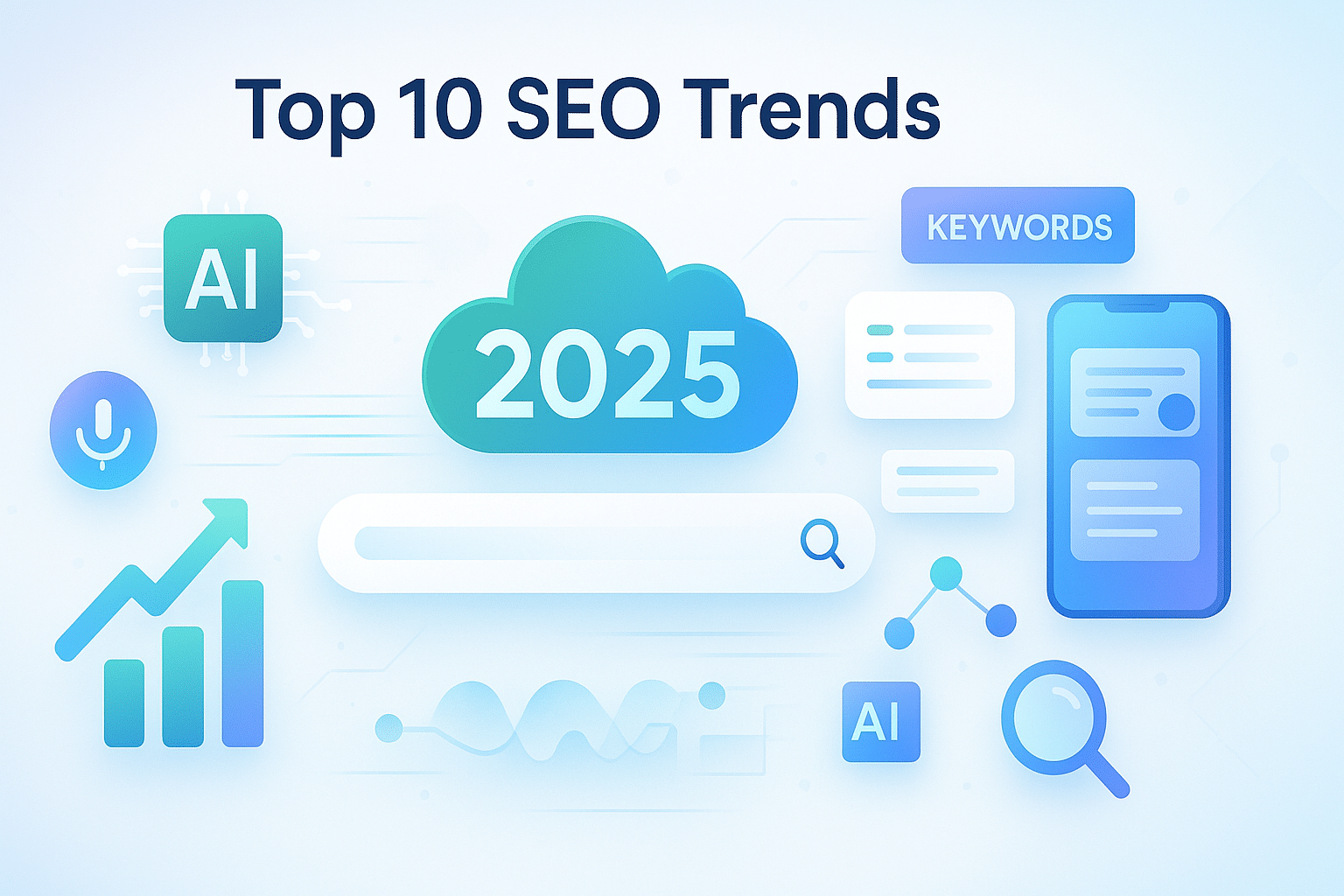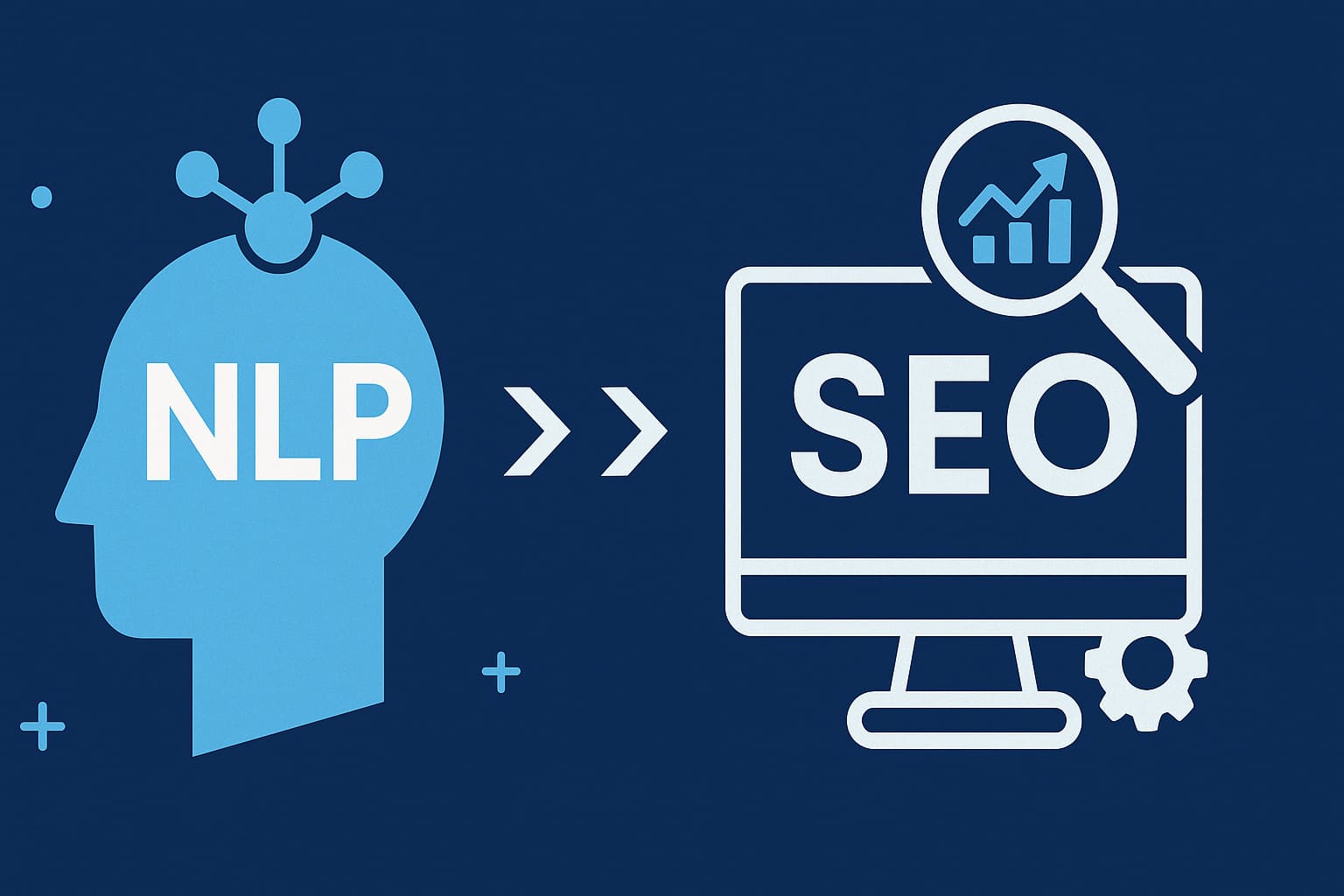SEO is moving faster than anyone expected. Today, more than 25% of searches already show results through Search Generative Experience (SGE). Users find answers inside AI Overviews, often skipping websites completely.
In 2025, ranking is not about stuffing keywords. It is about talking the way AI understands, using smart Entity Optimization, natural flow, and sharp facts.
Speed is the second battlefield. Google Core Web Vitals 2025 now puts heavy weight on INP (Interaction to Next Paint). If your page even stumbles, it drops down the ranks.
Real-world proof matters too. Sites strong in First-Party Data and Author Authority thrive while others vanish. Google no longer trusts pretty writing. It trusts real people, real signals, and real experience.
If your site cannot talk like a human, loads slow, or feels fake, it will disappear.
SEO is growing sharper, quicker, smarter. The real question is, are you ready?
1. AI Content Optimization Becomes Mandatory
AI Content Optimization is no longer an optional shortcut. In 2025, almost 70% of marketers now lean on AI Writing Assistants to draft faster, based on HubSpot research.
But fast drafts alone cannot win rankings anymore.
Today, only sites that master Human-AI Collaboration are moving ahead. AI writes the rough sketch; humans carve the masterpiece. This teamwork builds Content Authenticity Signals that Google’s AI models demand now.
Pages that win share these common traits:
- Natural Voice Adaptation — sounding like real humans, not stitched robots
- Brand Style Consistency — every post feels like part of one clear voice
- Author Attribution — linking real experts openly
- Timestamped Edits — showing active, living updates
Skip these, and your pages might survive, but they will not rise.
Google’s AI detectors now crush synthetic-sounding content without mercy.
Brands who are serious now use Fact-Verification AI Tools like Real-Time Fact Cross-Check and Bias Detection Layers to cement deeper trust.
Some sites even tag writers and claims with Author Entity Schema and Claim Review Schema to help Google verify real-world credibility in real time.
Users on WebmasterWorld shared that after shifting to real Author Attribution and strong human edits, their organic traffic jumped by 22% in 90 days.
Truth is simple: AI drafts build the scaffolding; human hands craft the masterpiece.
Google now reads not just what you say, but how you sound — and it is picking sides fast.
2. Search Generative Experience (SGE) Changes How We Rank
Search Generative Experience (SGE) is not creeping in slowly. It is rewriting SEO faster than anyone thought.
Instead of showing ten plain links, Google now serves AI Overviews — quick, AI-generated answers right at the top.
Today, almost 15% of searches already include an AI overview, based on Exploding Topics research.
SGE flips old search habits. It pulls key facts, rewrites them into a fresh voice, and displays answers even before users scroll.
Thanks to Multi-Turn Conversations and Interactive Query Refinement, users no longer stop after one search. They keep asking, refining, diving deeper — all without leaving the search page.
If your site is still built for single-click journeys, you are already falling behind.
Here is how to fit into the new flow:
- Write like a human talks — short, natural, conversational
- Answer early — first 2–3 sentences must hit the key point
- Use structured data — like FAQ Schema and QAPage Schema to signal quick answers
- Show real-world expertise — weave in real experience naturally
- Prepare for Context-Aware Responses — adjust your content to match evolving user questions
Site owners shared on WebmasterWorld that focusing on fast answers and adding Speakable Schema boosted their visibility in SGE by up to 20% within 90 days.
Google’s AI looks for signals like User Behavior Analysis and Personalized Search Journeys — how well your page fits users who keep changing what they want.
3. Zero-Click SEO Becomes the New Battlefront
Zero-Click SEO is not the future. It is already happening today. More than 57% of searches now end without a single click to a website.
A zero-click search happens when Google gives people the information they need right there, without visiting any site.
With Featured Snippets, Knowledge Panels, and quick answer cards, millions of searches now end without a single click.
Pages that aim for Featured Snippets need sharp summaries, clear formatting, and Position 0 Optimization. Those chasing Knowledge Panels must focus on Entity Recognition and use Structured Data Markup properly.
Even answering common follow-up questions inside People Also Ask (PAA) sections matters a lot now.
If your content is only built to chase clicks, you are playing an outdated game. Now, winning means becoming the answer users see first.
To thrive in the zero-click world, focus on this:
- Answer questions directly — give clear, simple answers users want without making them dig
- Use clear headings and subheadings — break content into easy sections that Google can understand fast
- Improve content readability — use small paragraphs, simple words, and clean formatting that feels natural
- Focus on Featured Snippets — craft sharp summaries, clean lists, and to-the-point explanations
- Understand search intent deeply — know why users ask a question and meet that need immediately
- Strengthen brand authority — become a familiar, trustworthy source that Google pulls answers from
Webmasters on industry forums shared that after rewriting their pages to answer queries more directly and cleaning up their structures, they saw a 30–35% jump in zero-click impressions within six months.
4. E-E-A-T Signals Will Decide Winners and Losers
In 2025, E-E-A-T Signals are no longer nice-to-have; they are the main reason pages rank or sink.
Google’s own Search Quality Evaluator Guidelines make it crystal clear — Experience, Expertise, Authority, and Trust can outrank even backlinks now.
If your page does not show real First-Hand Experience Content, it gets ignored.
Stories built from Original Research & Observations or real personal moments win hearts — and rankings.
Authors must stand tall too. Sites connecting their posts to Verified Author Credentials like LinkedIn Profile Verification and Knowledge Panel Presence rank faster and survive longer.
If you want to build unbeatable E-E-A-T, here is how to do it:
- Add personal storytelling — show the reader you have lived what you talk about
- Link real author profiles — connect articles to active LinkedIn or Knowledge Panel identities
- Stack third-party mentions — get cited by trusted media, blogs, or directories
- Be radically transparent — add Conflict of Interest Declarations where needed
- Secure your site — show Trust Seals and Badges with HTTPS certificates
- Mark everything with structured data — use Person Schema for authors, Organization Schema for brands, and Review Schema for customer voices
A case study from Search Engine Journal showed that authors with visible profiles improved SEO performance by 26% year-over-year.
5. First-Party Data SEO Powers Personalization
First-Party Data SEO is fast becoming the secret weapon for websites that want to stay trusted and seen.
After Google dropped third-party cookies, sites cannot depend on outside data anymore. They must collect and use their own — clean, real, and direct.
When websites link CRM Data Integration with SEO, they unlock sharper user insights. Using Behavioral Data Insights and Customer Journey Mapping helps create pages that feel personal to each visitor.
Good SEO now needs Contextual Targeting — showing the right message based on what visitors are doing, not just who they are.
Here is how to do it right:
- Link your CRM data to SEO tools — map visitor behavior in real time
- Use Topic Affinity Modeling — find what your audience really cares about
- Trigger smart content changes — based on On-Site Behavior Triggers
- Focus on Privacy-First Content Optimization — always ask for consent before collecting user actions
- Analyze First-Party Cookies carefully — break users into natural groups with Lifecycle Stage Targeting
- Encourage Zero-Party Data collection — ask users directly for their preferences in a simple way
Websites that manage privacy right, like using Consent-Driven Content Display, now win more trust from Google and from real users.
Those who move fast are breaking into new ranking levels. Those who wait are simply disappearing.
In 2025, personalization without true privacy will be like building a house on sand.
6. Google’s Multimodal Search Demands Cross-Format Content
Google’s Multimodal Search is not just another update — it is a whole new way people find things. Users can now blend words, images, and even voice into one search. Tools like Lens Search and Voice+Visual Queries are already live, and growing every day.
If your website only talks in text, it will look silent next to competitors who speak images and words together.
Google’s new Vision-Language Models (VLM) let it “see” images and “read” them at the same time as your page content. That means SEO now must cover text, pictures, and even voice.
Winning the game means getting good at things like:
- Alt-Text Optimization for every image
- Writing natural Contextual Captions under visuals
- Using Speakable Schema to mark voice-friendly parts of content
- Preparing for Cross-Modal Content Ranking by blending formats smoothly
- Structuring product pages with Product Schema for better Lens Search Expansion
Websites that also focus on Real-Time Object Detection and Semantic Image Understanding are already seeing better visibility across both visual and classic search results (source).
If your brand does not show up when someone asks, clicks, and snaps — you are invisible.
Multimodal is not optional anymore. It is your new SEO language.
7. Core Web Vitals 2025: INP and Smoothness Metrics
Big changes are coming to Core Web Vitals 2025, and they are not small tweaks. Google is officially replacing First Input Delay (FID) with Interaction to Next Paint (INP) starting March 2025 (source).
INP measures how quickly a page responds after someone taps, scrolls, or clicks — not just the first time, but every time.
If your website lags even a little, users will notice.
Pages that feel sluggish, jumpy, or stuck will lose both rankings and users.
Google is also adding new Smoothness Metrics to judge how steady your page looks while scrolling, tapping, or moving. High Frame Rate Consistency and smooth Animation Timing Adjustments will now matter as much as load time.
To get ready for these changes, websites should:
- Reduce JavaScript Payload Minimization for faster input reactions
- Prioritize CSS Delivery so visuals load clean and stable
- Apply Static Dimension Attributes to avoid layout shifts
- Use Code Splitting Techniques to lower Total Blocking Time (TBT)
- Optimize images and fonts to tighten Critical Rendering Path
Teams already tuning for Input Latency Improvements and Responsiveness Metrics are reporting major jumps in mobile engagement.
8. Entity-Based SEO Strengthens Content Authority
In 2025, Google’s ranking game is about entities, not just keywords anymore.
When users search, Google pulls results from a Knowledge Graph, not just pages stuffed with words. So if your website does not talk like a graph, it is already falling behind.
Entity-Based SEO means building pages around real people, places, things, and linking them naturally. Sites focusing on Knowledge Graph Optimization, Semantic Topic Clustering, and smart Entity Reconciliation are winning more top spots — and faster.
Winning with entities means doing things like:
- Mapping every page with Entity Linking Accuracy to known database IDs
- Clustering your topics around strong Topical Authority Signals
- Fixing duplicate mentions through Canonical Entity ID Assignment
- Structuring rich page markup with Multi-Type Schema Integration
- Filling gaps using Content Gap Identification from semantic research
Websites that embrace Contextual Co-occurrence Mapping — meaning talking about related ideas in one flow — rank higher naturally without needing spammy repetition.
SEO experts now measure success not just by backlinks but by Entity Attribute Expansion inside Google brain.
9. Author Authority Signals Impact SEO More Than Ever
Google trusts authors, not websites. If your name does not carry weight across the web, it is like whispering in a loud market — no one hears you.
Author Authority Signals are now vital. Pages linked to authors with strong Personal Knowledge Panels, active Cross-Domain Content Publishing, and real-world Expertise Timeline Tracking outperform anonymous content easily.
Here is how strong authors build SEO power today:
- Claim and optimize your Personal Knowledge Panel (Person Schema helps here)
- Publish across different sites to boost Platform Diversity Recognition
- Keep Content Freshness Signals active by writing often
- List yourself in trusted places for Third-Party Authorship Verification
- Maintain a Uniform Bio Across Platforms and consistent profile picture everywhere
Real examples show authors who validated their identity, posted across fields, and kept bios consistent saw a 32% higher ranking boost compared to faceless brands, according to early 2025 studies (source).
Today, your content is only as good as who wrote it.
10. SEO for AI Summaries: Structure for Machines
When people search now, they often see an answer without even clicking. AI Summaries pull bits from websites and show them on top of search results.
If your content is not ready for machines to read fast, it will get ignored. SEO for AI Summaries is about making your answers simple, direct, and structured enough for smart bots to find and show.
You can get picked more often by:
- Using FAQ Schema to mark clear questions and answers
- Adding HowTo Schema for step-by-step guides
- Writing quick, factual answers at the start of your paragraphs
- Using AI Answer Optimization techniques — keep it crisp, no fluff, strong nouns and verbs
- Structuring your sentences like mini-answers to expected search questions
Sites that added FAQ Schema correctly saw 2.2x more AI snippet appearances in 2024.
When you think about it, writing for AI is not much different from teaching a smart 5-year-old:
Simple words, short sentences, clear steps
Final Checklist: Your 2025 SEO Action Plan
You can know all the SEO trends in the world.
But if you do not act step-by-step, it is like trying to catch a train that has already left the station.
Here is a quick action list to stay ahead in 2025:
| Step | Action |
| 1 | Update your Core Web Vitals and optimize for INP (Interaction to Next Paint) |
| 2 | Add strong structured data — like FAQ Schema, HowTo Schema, and Person Schema for authors |
| 3 | Create short, punchy, fact-rich content blocks ready for AI to pick |
| 4 | Verify authors, strengthen bios, and add clear trust signals across your site |
| 5 | Build your First-Party Data Hubs to personalize content safely |
| 6 | Design content in multimodal formats — images, videos, voice snippets, text |
Following this checklist is not just ticking boxes. It is about shaping your site for how users, machines, and Google itself will think in 2025.
Small upgrades today can be the reason you survive the massive shifts coming tomorrow.
Waiting is no longer an option. 2025 SEO belongs to those who prepare smarter, not harder.






